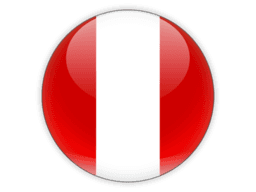
Regions of Peru
Explore 26 regions
Cities of Peru
Discover 50 cities across 23 regions
Apurímac Department(1)
Ayacucho(1)
Cajamarca Department(1)
Callao(1)
Cuzco Department(3)
Huánuco Department(1)
La Libertad(1)
Lambayeque(1)
Lima Province(1)
Lima region(10)
Madre de Dios(1)
Moquegua Department(1)
Piura(7)
Tacna(1)
Tumbes(1)
Peru is a country located in western South America. It has a diverse geography that includes the Andes Mountains, Amazon Rainforest, and Pacific coast. The capital city is Lima, which is also the largest city in the country. Peru is known for its rich history, cultural heritage, and natural beauty.
Peru has a population of over 32 million people, making it the fifth most populous country in South America. The official language is Spanish, but there are also many indigenous languages spoken throughout the country. The majority of the population is Roman Catholic, but there are also significant Protestant and other Christian communities.
Peru has a mixed economy that includes agriculture, mining, manufacturing, and services. It is a major exporter of minerals such as copper, gold, and silver, as well as agricultural products like coffee, asparagus, and grapes. Tourism is also an important industry, with millions of visitors coming to see Machu Picchu, the Nazca Lines, and other cultural and natural attractions.
Peru has a rich history that dates back thousands of years. The Inca Empire was one of the largest and most advanced civilizations in the world before the arrival of the Spanish in the 16th century. The country gained independence from Spain in 1821 and has since gone through periods of political instability and violence. However, in recent years, Peru has experienced significant economic growth and political stability.
Peru is also known for its cuisine, which is one of the most diverse and flavorful in the world. It includes dishes like ceviche, lomo saltado, and ají de gallina, which are enjoyed by locals and tourists alike. The country is also famous for its traditional textiles, ceramics, and handicrafts, which are produced by indigenous communities throughout the country.
Telephone Code
51
Local Emergency Phone
011, 5114
Vaccinations
An International Certificate of Vaccination for yellow fever is required for travelers arriving from countries with a risk of yellow fever transmission and for travelers having transited through the airport of a country with risk of yellow fever transmission. See WHO recommendations.
Climate
Varies from tropical in east to dry desert in west; temperate to frigid in Andes
Currency (Code)
Nuevo sol (PEN)
Electricity/Voltage/Plug Type(s)
220 V / 60 Hz / plug types(s): A, C
Major Languages
Spanish, Quechua, Aymara, Ashaninka
Major Religions
Roman Catholic 60%, Christian 14.6% (includes evangelical 11.1%, other 3.5%)
Potable Water
Opt for bottled water
International Driving Permit
Suggested; additionally, if you plan to drive in Peru, you will need an Inter-American Driving Permit issued by the AAA
Road Driving Side
Right
Tourist Destinations
Machu Picchu; Cusco's architectural treasures; Lake Titicaca; Colca Canyon; Lima; Nazca Lines; Qhapaq Nan/Andean Road System
Major Sports
Soccer, volleyball, tennis
Cultural Practices
Slapping the bottom of one elbow with the open palm of the other hand means someone is cheap.
Tipping Guidelines
Most restaurant and bar bills will include a 10% gratuity. It is customary to add an extra 10% tip if the service has been satisfactory. Tipping is not expected for taxis and fares are negotiated beforehand. One Nuevo sol per bag for porters is appreciated.
Souvenirs
Alpaca wool sweaters, scarves, and Chullo hats; pottery; sterling silver jewelry; leather goods; carved gourds
Traditional Cuisine
Ceviche — chunks of raw fish marinated in lime juice, mixed with onions, chili peppers, and garlic; fish bone broth, salt, and pepper are used for seasoning
Geography
Area
total: 1,285,216 sq km
land: 1,279,996 sq km
water: 5,220 sq km
Climate
varies from tropical in east to dry desert in west; temperate to frigid in Andes
Natural resources
copper, silver, gold, petroleum, timber, fish, iron ore, coal, phosphate, potash, hydropower, natural gas
People and Society
Population
32,440,172 (2023 est.)
Ethnic groups
Mestizo (mixed Amerindian and White) 60.2%, Amerindian 25.8%, White 5.9%, African descent 3.6%, other (includes Chinese and Japanese descent) 1.2%, unspecified 3.3% (2017 est.)
Languages
Spanish (official) 82.9%, Quechua (official) 13.6%, Aymara (official) 1.6%, Ashaninka 0.3%, other native languages (includes a large number of minor Amazonian languages) 0.8%, other (includes foreign languages and sign language) 0.2%, none 0.1%, unspecified 0.7% (2017 est.)
Religions
Roman Catholic 60%, Christian 14.6% (includes Evangelical 11.1%, other 3.5%), other 0.3%, none 4%, unspecified 21.1% (2017 est.)
Population growth rate
0.5% (2023 est.)
Government
Government type
presidential republic
Capital
name: Lima
Economy
Economic overview
upper middle-income South American economy; hit hard by political instability and COVID-19 but rebounding quickly; second-largest cocaine producer; current account balance improving; persistent income inequality; diversified exporter
Real GDP (purchasing power parity)
$421.937 billion (2021 est.)
Real GDP per capita
$12,500 (2021 est.)
Agricultural products
sugar cane, potatoes, rice, plantains, milk, poultry, maize, cassava, oil palm fruit, grapes
Industries
mining and refining of minerals; steel, metal fabrication; petroleum extraction and refining, natural gas and natural gas liquefaction; fishing and fish processing, cement, glass, textiles, clothing, food processing, beer, soft drinks, rubber, machinery, electrical machinery, chemicals, furniture
Exports
$66.098 billion (2021 est.)
Exports - partners
China 29%, United States 12%, Canada 5%, South Korea 5%, Switzerland 5% (2019)
Exports - commodities
copper, gold, refined petroleum, zinc, fishmeal, tropical fruits, lead, iron, molybdenum (2019)
Imports
$58.611 billion (2021 est.)
Imports - partners
China 24%, United States 22%, Brazil 6% (2019)
Imports - commodities
refined petroleum, crude petroleum, cars, broadcasting equipment, delivery trucks (2019)
International Airports in Peru
Discover 24 major airports serving Peru
Mark Peru as Visited
Add Peru to your personal travel map and track your journey around the world. Share your adventures and see your progress grow!